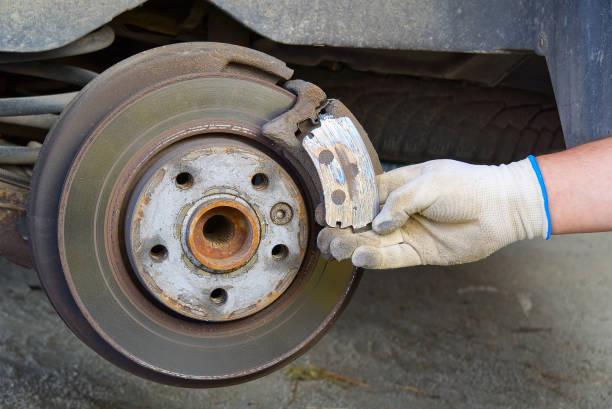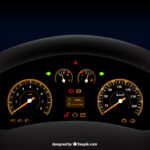6 Signs your Brake Pad needs Replacement

When Should Brake Pads And Rotors Be Changed?
Brake pads should normally be changed every 25,000 to 65,000 miles, while brake rotors should typically be changed every 30,000 to 70,000 miles. Nevertheless, the precise figure may vary based on the road and driving conditions. The good news is that when your brake pads are nearing the end of their useful life, you’ll probably notice mild symptoms, which makes diagnosis and fixes simple. Not sure when to replace your braking rotors or pads? Here are six typical indications that it’s time for new brake pads and rotors.
1.Brakes Are Squeaking or Squealing
The first sign that your brake pads are getting close to the end of their usable life is a squeaking or screaming sound emanating from the brakes. Brake pads that are too heavily worn down frequently produce squealing noises. When your pads are sufficiently worn down, a grinding sound will start to occur, and you will also start to damage your rotors, raising the expense of repair.
2.When braking, grinding noise
As we mentioned before, your brake pads need to be replaced right away if you hear grinding noises when pressing the brake pedal. When it’s time to replace the brake pads, some brake pads include built-in metal wear indicators that produce a loud noise. You risk much greater damage and more expensive repairs if you allow the brake pads to continue grinding.
3.Braking Causes Vibration
Another indication that the braking system in your car needs professional attention is vibration when you press the brakes. It’s likely that your rotors are deformed, which has caused uneven brake pad wear.
4.Taking More Time To Stop
Loss of performance when applying the brakes is yet another important indication that your brakes need to be examined. If you’re having trouble stopping when you press the brakes, your brake pads may be entirely worn out or your brake fluid may be low (often times due to a leak). You should visit a brake repair as soon as you can to acquire a true knowledge of what’s happening with your brakes so that you don’t lose all braking capability.
5.Turning On Is The Brake Pad Indicator Light
Most current cars come equipped with brake warning lights that are located on the dashboard. One is the brake system warning light, while the other is the Antilock Braking System (ABS) light. When there is a problem, your brake light won’t always come on; it also turns on when your parking brake is used. However, if your parking brake isn’t engaged and you’re seeing a brake warning light, it’s time to have a brake specialist examine your system to identify the problems.
6.It Looks Like Your Brake Pads Are Thin.
Visually examining your brake pads for wear is one simple approach to check on their condition. To accomplish this, find your brake pad by looking between the spokes on your wheels. You should generally replace your brake pads if they appear to be less than 14 inch thick, or 6.4 mm.







